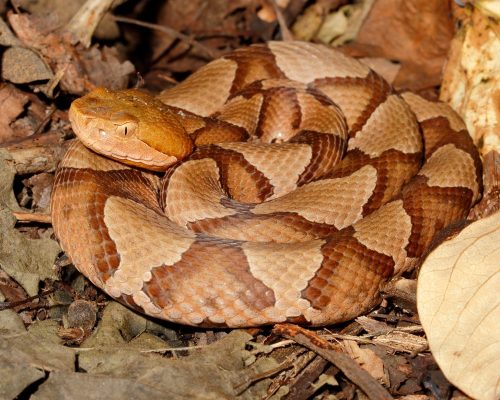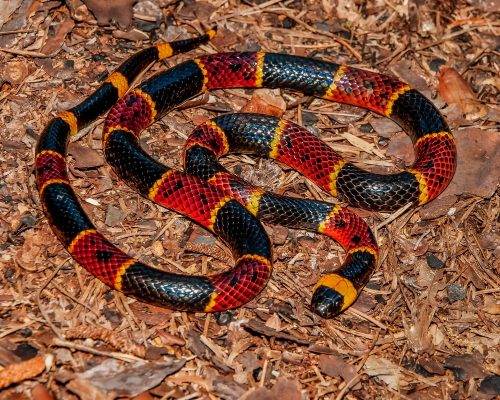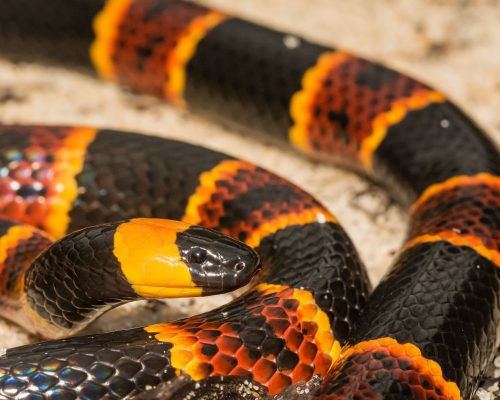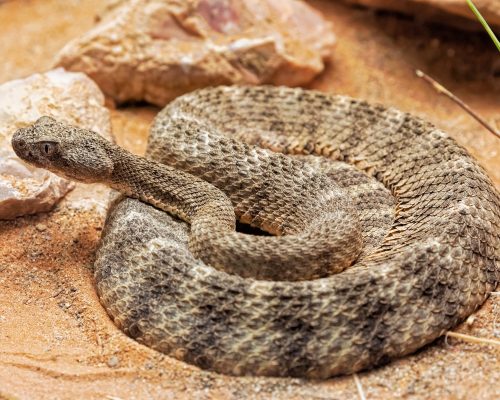For wildlife enthusiasts, outdoor adventurers, or homeowners in snake-prone areas, recognizing North America’s venomous snakes is more than an interesting skill—it could be lifesaving. This post provides a detailed guide to help you identify venomous snakes residing in North America, starting with the most common species.
While there are about 3,000 snake species worldwide, only around 600 are venomous. North America is home to 20 of these venomous species. Here we start with the four most frequently encountered ones: Rattlesnakes, Copperheads, Water Moccasins (Cottonmouths), and Coral snakes, and continue with the lesser-known species.
Western Diamondback Rattlesnakes
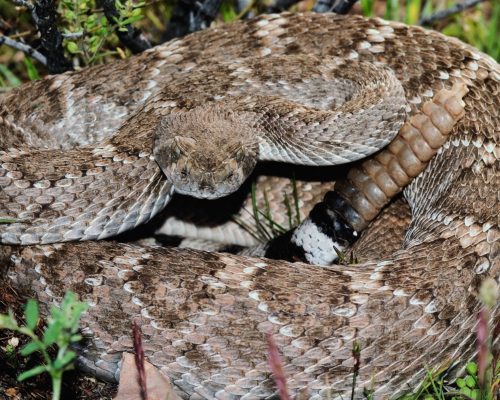
These snakes are easily recognized by their distinctive tail rattle and diamond pattern. They typically have robust bodies and a wide, triangular head. Western Diamondback Rattlesnakes can be found in the western north America throughout baja California.
Copperheads Venomous Snakes
Copperheads, widespread across the southeastern united states, have a characteristic copper-red head. Their unique hourglass-shaped bands, broad on the sides and narrow on the spine, provide another identifying feature.
Cottonmouths (Water Moccasins)
These semi-aquatic snakes, found primarily in the southeastern United States with the highest density in Florida, display broad heads and a dark, thick body. When threatened, they open their mouths, revealing a white interior—earning them their “Cottonmouth” nickname.
Coral Snakes
Known for their bright red, yellow, and black bands, Coral snakes’ color pattern can be remembered by the rhyme, “Red touch yellow, kill a fellow; red touch black, venom lack”. Remember, this rhyme is only applicable to North American Coral snakes. There are 3 primary variants in North America described below
Arizona Coral Snake
Similar to other Coral snakes but slightly smaller, this species inhabits Arizona and northern Mexico.
Texas & Harlequin Coral Snake
The Texas Coral Snake is found in Texas and Louisiana, this snake has similar banding patterns to other Coral snakes. The Harlequin Coral Snake is similar in appearance and is found in Florida, North Carolina, Georgia, and Louisiana.
Massasauga
Found in the midwestern U.S. and parts of Canada, the Massasauga is a small rattlesnake featuring a combination of dark brown blotches on a grey or tan body.
Pygmy Rattlesnakes (Western, Eastern, and Carolina)
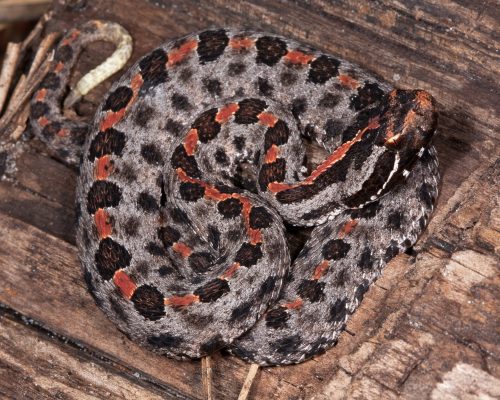


These smaller rattlesnakes have speckled, blotchy patterns. Their rattle is tiny and can sound like a buzzing insect.
Sidewinders


These rattlesnakes are known for their sideways movement and horn-like scales over their eyes. They inhabit desert regions.
Speckled and Panamint Rattlesnakes

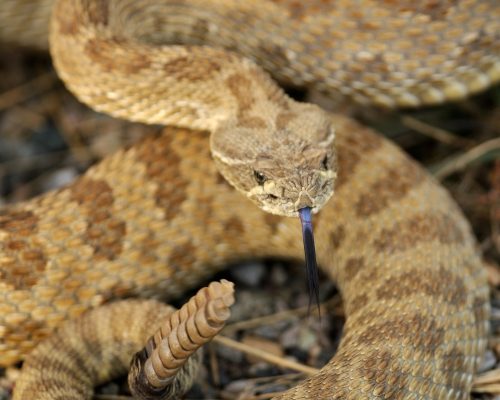
Inhabiting rocky, mountainous terrain, in the Southwestern US and throughout Baja Mexico these snakes have speckled patterns, as their names suggest.
Cantil
The Cantil, found in Mexico and Central America, has a black or brown body with wide, cream-colored bands.
Tiger Rattlesnake
Known for its grey-green color and distinctive banding, this rattlesnake inhabits southwestern U.S. and Mexico.
Banded Rock Rattlesnake
Distinguished by their broad, banded pattern, the Tiger Rattlesnake is found in southwestern U.S.
Ridge-nosed Rattlesnake
This small rattlesnake is distinguished by a ridge along each side of its nose. It’s found in the southwestern U.S. and Mexico.
While venomous snake bites are infrequent, being able to identify these creatures is invaluable for anyone venturing into their territories. Always maintain a respectful distance when encountering any snake. If a snake bite occurs, medical attention should be sought immediately. Remember, even venomous snakes play a crucial ecological role, controlling pests and enriching biodiversity. Let’s cultivate knowledge and respect for these fascinating, misunderstood creatures!
Check out our Snake handling equipment, for non-venomous and venomous snakes today!

